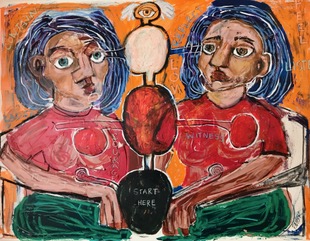Human connection and intimacy (attachment) are essential for all human beings. In my work as a psychotherapist, I am often inspired by the narratives of clients in their desire and work towards strengthening their bonds with others, but most importantly with themselves. I often remind clients that the ‘work’ that we do in the therapeutic session is significant as it is the basis of the work that they will do in all of their relationships with partners, children, family members, friends, and employers etc. Adult relationships can be understood within the original experiences of childhood, and are reflective of the individual’s early experiences with their primary caregivers in infancy. Yet, I do not believe it is essential to dig through the past pains and trauma of earlier life experiences to appreciate the relationships we have with others and ourselves. The present moment offers much opportunity for lifelong healing, health, and opportunity for change.
Historically, psychotherapy placed great emphasis on the first 6 years of life in regards to developing our blueprint for attachments throughout our lives. This blueprint is referred to as attachment style. This theory was first introduced by the English psychologist, John Bowlby, in his paper published in 1958 entitled “The Nature of a Child’s Tie To His Mother” (Ainsworth, 1978, p.3). The experiences we have with our primary caregivers is indeed significant and deserves ongoing attention, yet in Thomas Lewis, Fari Amini, and Richard Lannon’s work A General Theory of Love (2007), they assert that human attachment styles are a series of neurobiological processes that are ongoing and able to change throughout our lives. For many, this theory offers hope and a sense of control over traumatic and painful life experiences from childhood and young adulthood. In order to understand the significant implications of Lewis, Amini, and Lannon’s research, it is important to understand the fundamental role of emotional attachment. There are many factors that shape our ability to attach with others. We are biologically programmed to attach to our primary caregivers. From our birth, our coos and smiles at our caregivers are not simply sweet gestures, but are designed to keep us close to our caregivers for biological survival. One of the central themes of Bowlby’s theory of attachment development is that both the child and the caregiver simultaneously shape the psychological and biological development of each other.
This co-creating of attachment (relationships) and the neuro-biochemical implications are the keystone of my work with clients and is beautifully explained in A General Theory of Love. It is not essential to go back and dig through the treacherous territory of past pain and trauma (I often hear from clients that that is not their goal or desire in our work together). In fact, I inform clients that based on my experience in working with survivors of trauma, that the past will naturally present itself in the present moment when and if it is significant to our process together. This often offers a great sense of relief on behalf of the client and allows our work to take on a new and fresh perspective of how clients can change their current role in their relationships.
As a result, the client and I build an alliance with one another. In my work, I am active with my clients and participate in the conversation. We transform each other’s experiences of attachment in the here and now which informs the client that they are able to do this in their significant relationships. Although, in adulthood, our biological survival is hopefully assured through our ability to provide shelter and food for ourselves, it is the quality of the relationships we create that assure our emotional survival which define our sense of self through connection with others and allow us to confidently celebrate our successes as well as meet our human challenges based on a healthy sense of self and others in our lives.
References
Ainsworth, M.D, Blehar, M.C, Waters, E. & Wall, S. (1978). Patterns of Attachment.
New Jersey: Lawrence Erlbaum Associates.
Lewis, T., Amini, F., & Lannon, R. (2007). A General Theory of Love.
New York: Random House.
